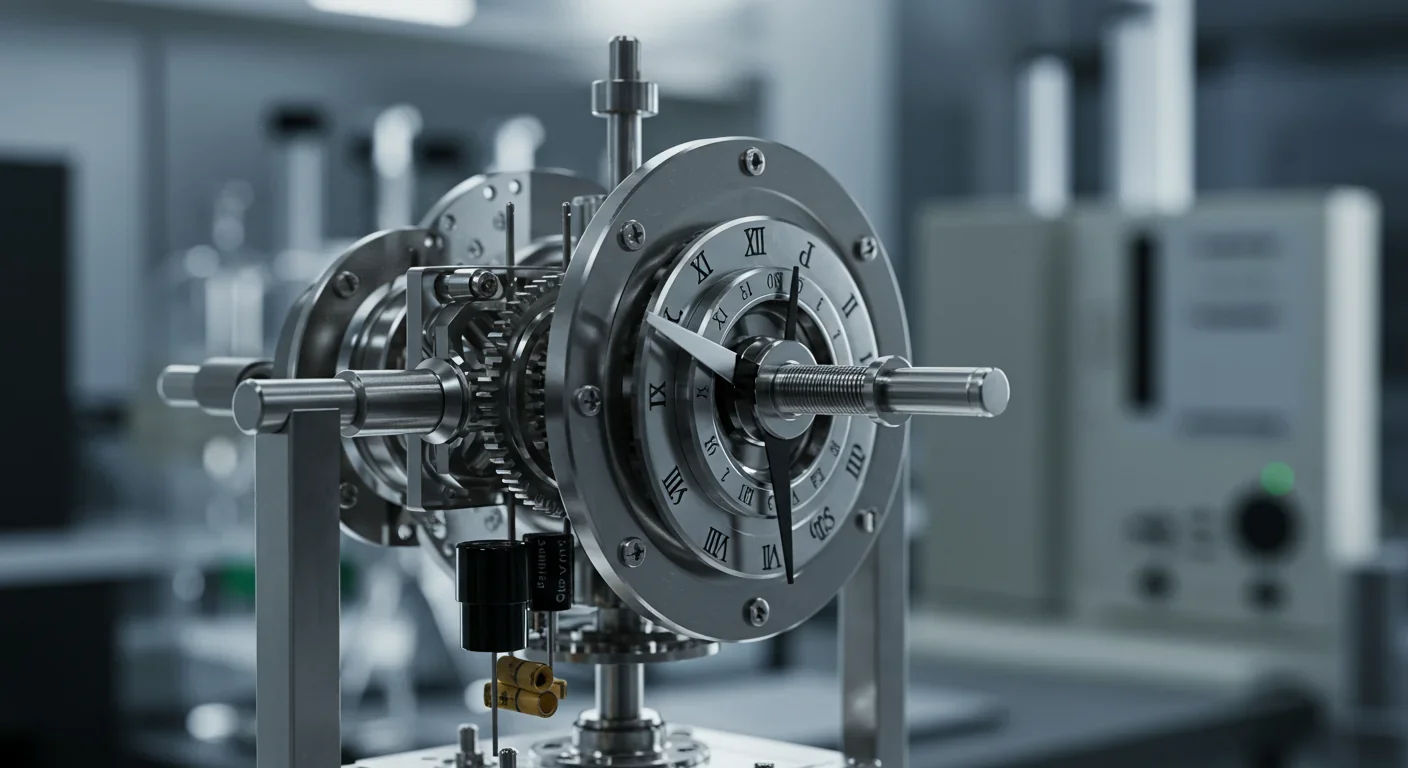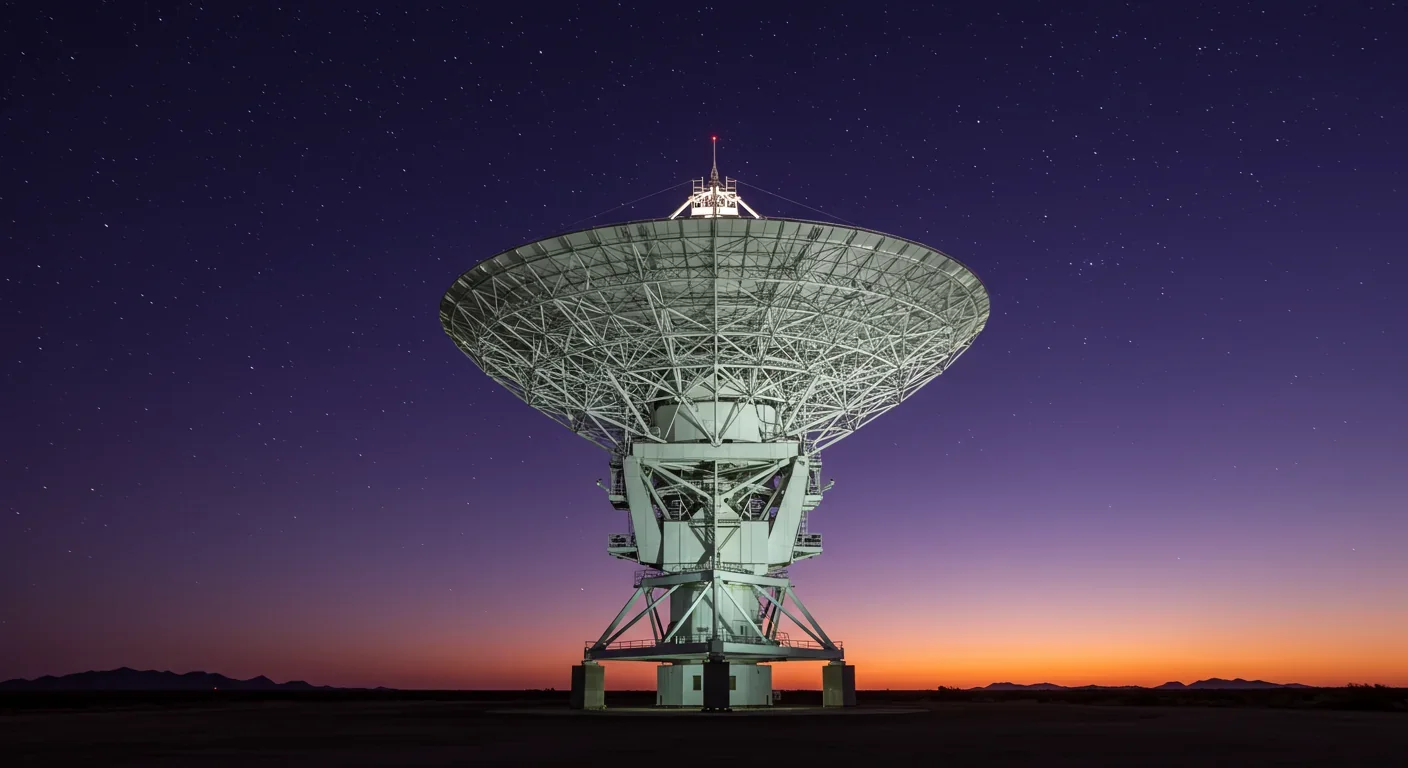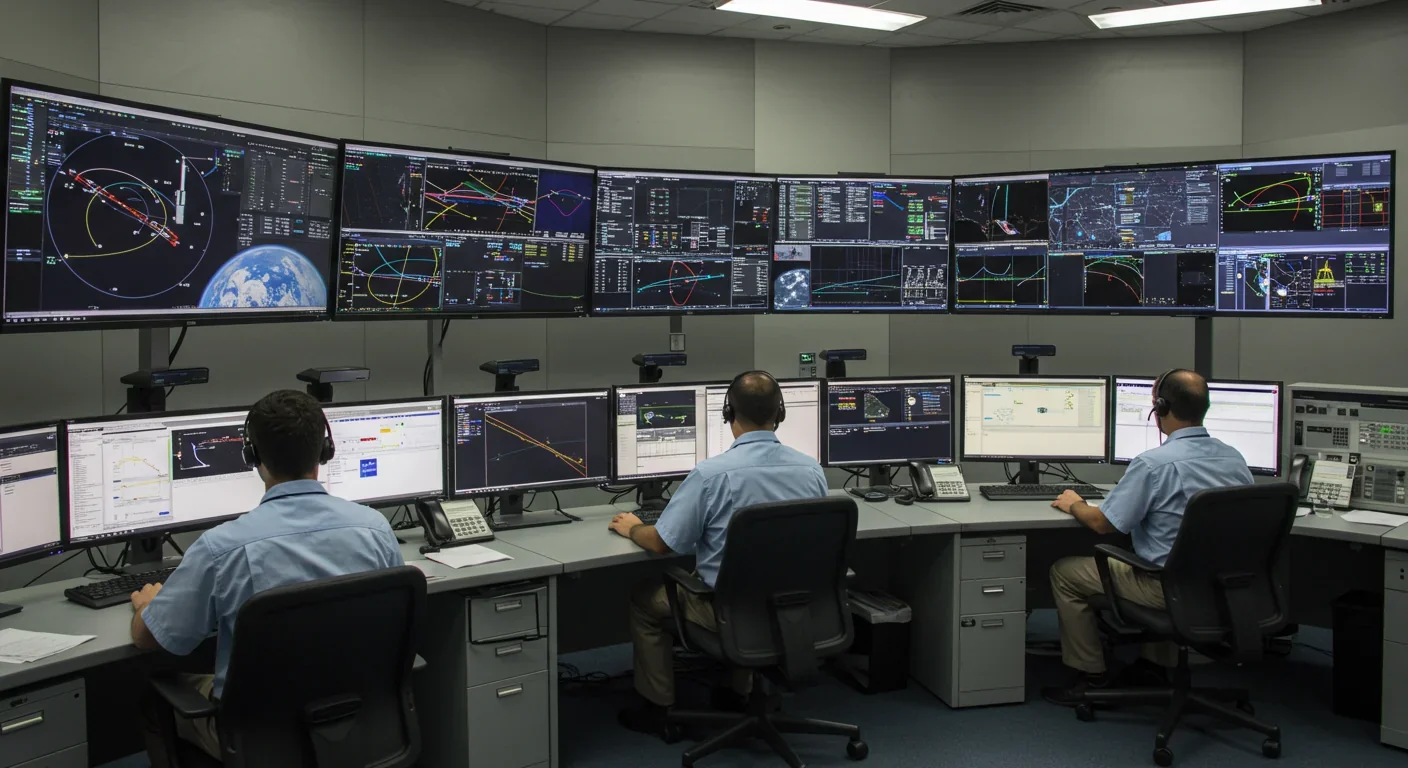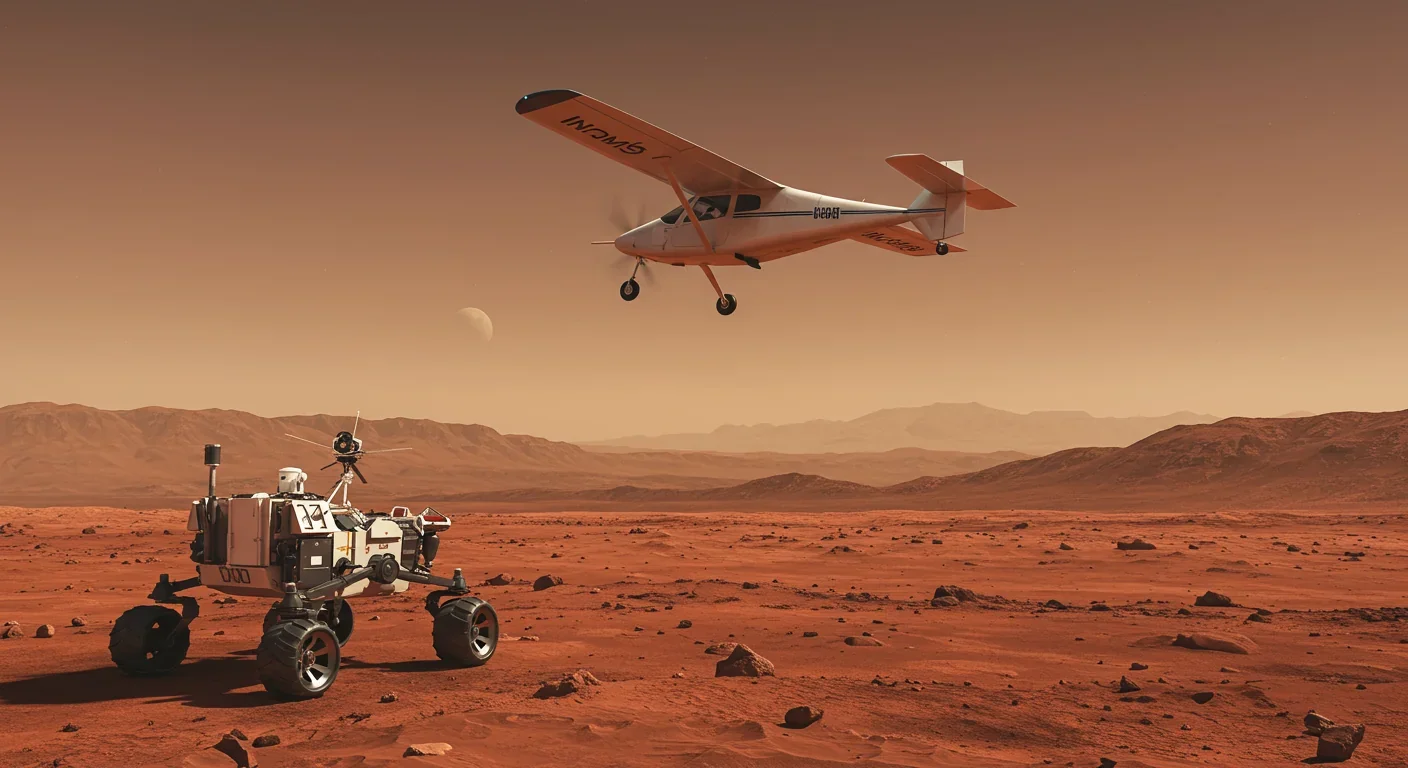The Gravity Heresy: MOND vs Dark Matter Theory Explained

TL;DR: Dead stars called millisecond pulsars could replace Earth-based tracking for spacecraft navigation. NASA's NICER experiment proved the concept works, achieving 5-kilometer accuracy using only natural cosmic signals. This technology will enable autonomous navigation for Mars missions, outer solar system exploration, and eventually interstellar probes.
The further humanity ventures into space, the more obvious a problem becomes: our navigation systems still rely on Earth. Every spacecraft beyond the Moon depends on massive radio dishes scattered across our planet to figure out where it is. The Deep Space Network tracks missions to Mars, Saturn, and beyond, but it's a bottleneck that can't scale to support dozens or hundreds of missions simultaneously. What happens when we have colonies on Mars? Settlements in the asteroid belt? Probes exploring other star systems?
Scientists have found an elegant solution hiding in plain sight: millisecond pulsars, the universe's most precise natural clocks. These rapidly spinning neutron stars emit radio pulses so regular they rival our best atomic clocks. NASA has already proven the concept works. Now the question is how quickly we can make it standard equipment for every spacecraft leaving Earth orbit.

Pulsars are what's left after massive stars explode in supernovae. The core collapses into a sphere roughly 20 kilometers across but containing more mass than our sun. Some spin hundreds of times per second, and as they rotate, they sweep beams of radiation across space like cosmic lighthouses.
The really useful ones are called millisecond pulsars. They complete a full rotation in just a few thousandths of a second, and they do it with extraordinary consistency. PSR J0437-4715, one of the closest and brightest millisecond pulsars to Earth, rotates 173.7 times every second. Its timing is so stable that over decades of observation, astronomers have measured its slowdown rate at just 5.73 × 10^-20 seconds per second.
That stability matters because navigation in space is fundamentally about timing. GPS satellites work by broadcasting precisely timed signals. Your phone measures how long those signals take to arrive, calculates the distance to multiple satellites, and figures out your position. Pulsar navigation uses the same principle, except the "satellites" are natural phenomena scattered across the galaxy, and they've been broadcasting for millions of years without maintenance.
Pulsar timing is so stable that the best millisecond pulsars rival atomic clocks, yet they've been broadcasting for millions of years without any maintenance or power source.
The technical term is X-ray pulsar-based navigation and timing, or XNAV. Instead of waiting for signals from Earth, a spacecraft carries its own X-ray telescope pointed at known pulsars. It detects the arrival times of pulsar pulses, compares them to predicted arrival times at a reference location (usually the solar system barycenter, the center of mass around which all planets orbit), and calculates how far the spacecraft is from that reference point.
This works because pulsar signals travel at the speed of light. If a spacecraft is farther from a pulsar than Earth is, it will detect pulses slightly later than predicted. If it's closer, pulses arrive earlier. By tracking multiple pulsars simultaneously, the spacecraft can triangulate its position in three dimensions.
NASA's NICER telescope, mounted on the International Space Station, demonstrated this in 2018 through the SEXTANT (Station Explorer for X-ray Timing and Navigation Technology) experiment. Over two days, NICER tracked four millisecond pulsars, PSR B1821-24, PSR B1937+21, PSR J0218+4232, and PSR J0030+0451, and calculated the space station's position to within 5 kilometers.
That might sound imprecise compared to GPS's meter-level accuracy, but context matters. The International Space Station orbits 400 kilometers above Earth. Knowing your position within 5 kilometers when you're already in low Earth orbit, using only natural cosmic signals, is remarkable. For deep space missions traveling millions or billions of kilometers, 5-kilometer precision is more than adequate.

Traditional spacecraft navigation is surprisingly labor-intensive. Engineers at ground stations send radio signals to a distant spacecraft and measure how long it takes for the signal to return. They analyze the Doppler shift in the spacecraft's radio transmissions to determine its velocity. They combine this data with models of gravitational forces, solar radiation pressure, and thruster firings to estimate the spacecraft's trajectory.
This works, but it has serious limitations. First, it requires constant communication with Earth. The Deep Space Network consists of only three facilities, strategically placed in California, Spain, and Australia so at least one can always see any spacecraft in deep space. These facilities are shared among dozens of active missions. As more missions launch, scheduling conflicts become inevitable.
Second, there's the speed-of-light delay. Radio signals traveling to Mars take between 4 and 24 minutes one way, depending on where Earth and Mars are in their orbits. Navigating in real-time under those conditions is impossible. Everything must be planned in advance or handled autonomously.
Third, you can't navigate beyond line of sight to Earth. A spacecraft on the far side of Mars, or in orbit around Jupiter's moon Europa, loses contact whenever the planet blocks the signal path. During those blackout periods, it's navigating blind.
Pulsar navigation eliminates all three problems. Pulsars are visible from anywhere in the solar system and beyond. A spacecraft using pulsar navigation doesn't need to communicate with Earth to know where it is. It doesn't matter if you're on the far side of Mars or exploring the outer reaches of the Kuiper Belt. As long as your X-ray detectors can see pulsars, you can navigate autonomously.
"Celestial navigation using pulsars offers a backup system that no adversary can jam or destroy because the signal sources are neutron stars hundreds or thousands of light-years away."
— U.S. Navy research on GPS alternatives
The U.S. Navy is exploring pulsar navigation for a completely different reason: GPS vulnerability. GPS satellites are fragile. Jamming, spoofing, or destroying a handful of satellites could cripple navigation systems that modern militaries depend on. Celestial navigation using pulsars offers a backup system that no adversary can jam or destroy because the signal sources are neutron stars hundreds or thousands of light-years away.

Pulsar navigation isn't ready for prime time yet. The challenges are significant.
The biggest problem is signal strength. Pulsars are incredibly distant. Even the closest known pulsar is about 400 light-years away. The X-ray pulses that reach our solar system are extraordinarily faint, millions of times weaker than GPS signals. Detecting them requires large X-ray telescopes with sensitive detectors and long observation periods.
NICER's X-ray telescope has a collecting area of about 1,900 square centimeters. That's large for a space-based X-ray telescope but tiny compared to radio telescopes on Earth. To achieve the 5-kilometer positioning accuracy demonstrated in the SEXTANT experiment, NICER had to observe pulsars for extended periods, sometimes hours, to collect enough photons for precise timing measurements.
Spacecraft also need to carry accurate onboard clocks. While pulsars provide the ultimate timing reference, a spacecraft must maintain its own clock between pulsar observations. The clock doesn't need to be as stable as the pulsars themselves, but it must be good enough to avoid significant drift between measurement intervals.
Then there's the computational challenge. Processing pulsar timing data requires sophisticated algorithms that account for relativistic effects, the spacecraft's motion, and uncertainties in pulsar positions and timing models. Researchers have developed advanced algorithms specifically for XNAV, including Bayesian filters and particle filters that can estimate position and velocity even with sparse, noisy data.
Not all pulsars are suitable for navigation. The ideal pulsar for XNAV is bright in X-rays, has a fast and stable spin rate, and is positioned in a useful location in the sky. Astronomers have cataloged thousands of pulsars, but only a few dozen meet the criteria for navigation. Building a comprehensive pulsar timing array requires ongoing observation and characterization of these objects.

NASA isn't alone in developing pulsar navigation. China has made significant investments in XNAV technology, launching the XPNAV-1 satellite in 2016 to test pulsar-based navigation concepts. European Space Agency researchers have also published studies on XNAV algorithms and potential applications for future missions.
Recent research has focused on improving the accuracy and efficiency of pulsar navigation systems. A 2025 study in MDPI Applied Sciences examined how to optimize pulsar selection for specific mission profiles, balancing signal strength, sky coverage, and computational requirements. Other researchers are exploring relativistic corrections needed for high-precision navigation, accounting for effects like gravitational time dilation near massive bodies.
The technology is advancing beyond pure research. Companies are beginning to incorporate pulsar navigation concepts into next-generation navigation systems. While we're still years away from operational XNAV systems on deep space missions, the technological foundation is solidifying.
The most immediate application for pulsar navigation is Mars exploration. As humanity transitions from brief visits to permanent presence on Mars, autonomous navigation becomes essential. Rovers, landers, orbiters, and eventually crewed spacecraft will need to operate independently without constant guidance from Earth.
Communication delays to Mars range from 4 to 24 minutes one way. That's manageable for slow-moving rovers that travel meters per day, but it's problematic for aircraft, rapid surface vehicles, or orbital rendezvous operations. A Mars helicopter can't wait 8 to 48 minutes for navigation updates. It needs real-time positioning.
Pulsar navigation combined with local terrain mapping and inertial sensors could provide that capability. A Mars aircraft could determine its position relative to the solar system barycenter using pulsars, then refine its local position using visual odometry and terrain matching. No Earth contact required.
An interstellar probe traveling to Alpha Centauri could navigate using the same pulsars visible from Earth, determining its position relative to the galaxy itself rather than an increasingly distant home planet.
The outer solar system presents even more compelling use cases. Jupiter, Saturn, Uranus, and Neptune have complex systems of moons that are targets for exploration. The Galileo spacecraft, which orbited Jupiter from 1995 to 2003, relied entirely on Earth-based tracking. Future missions to explore Jupiter's moon Europa or Saturn's moon Enceladus could navigate autonomously using pulsar timing, enabling more flexible mission operations and reducing ground station workload.
Looking further ahead, interstellar probes represent the ultimate test for pulsar navigation. The Voyager spacecraft, launched in 1977, are now more than 20 billion kilometers from Earth and still communicating, but they're essentially flying blind between navigation updates from Earth. An interstellar probe traveling to Alpha Centauri, 4.37 light-years away, would take tens of thousands of years with current propulsion technology.
Even with breakthrough propulsion systems that could reach a significant fraction of light speed, communicating across interstellar distances becomes prohibitively difficult. Pulsar navigation offers a solution. The same pulsars visible from Earth are visible from Alpha Centauri. A probe could navigate using pulsar timing throughout its journey, determining its position relative to the galaxy itself rather than relative to an increasingly distant Earth.

The Pioneer plaques attached to the Pioneer 10 and 11 spacecraft, launched in the 1970s, used pulsars as reference points to indicate Earth's location to potential extraterrestrial finders. The plaques show the position of our sun relative to 14 pulsars, using their unique spin periods as cosmic coordinates. It's poetic that the same pulsars we once used to tell aliens where we live might someday guide our own spacecraft across the galaxy.
Making pulsar navigation operational requires solving practical engineering problems. Spacecraft need lightweight X-ray telescopes with sufficient collecting area to detect pulsar signals in reasonable timeframes. They need radiation-hardened processors capable of running complex timing algorithms. They need accurate pulsar timing models that account for known variations in pulsar behavior.
Ground-based infrastructure matters too. While the point of pulsar navigation is autonomy, spacecraft still need initial calibration and periodic updates to pulsar timing models. Pulsars are stable but not perfectly so. They experience glitches, sudden changes in rotation rate caused by internal dynamics. Their rotation gradually slows over time. Monitoring pulsars from Earth using facilities like the Neutron Star Interior Composition Explorer helps maintain the timing models that spacecraft depend on.
Creating a standardized catalog of navigation pulsars would benefit all space agencies and commercial operators. Such a catalog would include precise timing models, uncertainty estimates, and recommendations for which pulsars to use for different mission profiles. International coordination would ensure consistent standards and avoid duplication of effort.
The cost of X-ray detector technology is decreasing. What required a dedicated satellite mission in the 2000s might fit in a cubesat-sized package within a decade. As detectors become smaller and more efficient, pulsar navigation could transition from an exotic technology for flagship missions to a standard capability on all deep space spacecraft.
The shift from Earth-dependent navigation to autonomous pulsar navigation represents more than incremental technological progress. It's foundational infrastructure for a spacefaring civilization.
Think about what GPS enabled on Earth. Before GPS, navigation required maps, landmarks, dead reckoning, and careful attention to your surroundings. GPS made navigation effortless and ubiquitous. It enabled logistics networks, precision agriculture, financial transaction timestamping, emergency response systems, and countless applications that weren't even conceived when GPS was first developed.
Pulsar navigation could do something similar for space. Right now, operating a spacecraft beyond Earth orbit requires a large, specialized ground support team and access to limited Deep Space Network resources. Those constraints fundamentally limit how many missions we can operate simultaneously and how far humanity can realistically expand into space.
"With autonomous navigation, spacecraft become more independent. Missions could be planned and executed with smaller teams, enabling new categories of missions previously impossible."
— Future of autonomous space exploration
With autonomous navigation, spacecraft become more independent. Missions could be planned and executed with smaller teams. Multiple spacecraft could coordinate with each other directly rather than routing everything through Earth. Spacecraft exploring the outer solar system could adjust their trajectories in response to new discoveries without waiting hours or days for instructions from mission control.
This isn't just about efficiency. It's about enabling new categories of missions. Swarms of small spacecraft exploring the asteroid belt, each navigating independently and sharing data with the fleet. Autonomous sample return missions to the moons of Jupiter or Saturn. Eventually, spacecraft that can navigate themselves across interstellar space to other star systems, maintaining their course over decades or centuries without human intervention.
The technology that makes this possible already exists. We're just scaling it up, refining the algorithms, and integrating it into spacecraft design. In a decade or two, pulsar navigation might be as routine as GPS is today. Spacecraft will launch with X-ray telescopes and pulsar timing receivers as standard equipment, navigating by dead stars scattered across the galaxy.
Ancient mariners navigated by the Sun and stars. Modern ships navigate by GPS satellites. Tomorrow's spacecraft will navigate by pulsars, natural beacons that have been broadcasting since before Earth existed and will continue long after our sun burns out. We're not just exploring space. We're learning to use it as infrastructure, building the navigation systems that will carry humanity to the stars.

MOND proposes gravity changes at low accelerations, explaining galaxy rotation without dark matter. While it predicts thousands of galaxies correctly, it struggles with clusters and cosmology, keeping the dark matter debate alive.

Ultrafine pollution particles smaller than 100 nanometers can bypass the blood-brain barrier through the olfactory nerve and bloodstream, depositing in brain tissue where they trigger neuroinflammation linked to dementia and neurological disorders, yet remain completely unregulated by current air quality standards.

CAES stores excess renewable energy by compressing air in underground caverns, then releases it through turbines during peak demand. New advanced adiabatic systems achieve 70%+ efficiency, making this decades-old technology suddenly competitive for long-duration grid storage.

Our brains are hardwired to see patterns in randomness, causing the gambler's fallacy—the mistaken belief that past random events influence future probabilities. This cognitive bias costs people millions in casinos, investments, and daily decisions.

Forests operate as synchronized living systems with molecular clocks that coordinate metabolism from individual cells to entire ecosystems, creating rhythmic patterns that affect global carbon cycles and climate feedback loops.

Generation Z is the first cohort to come of age amid a polycrisis - interconnected global failures spanning climate, economy, democracy, and health. This cascading reality is fundamentally reshaping how young people think, plan their lives, and organize for change.

Zero-trust security eliminates implicit network trust by requiring continuous verification of every access request. Organizations are rapidly adopting this architecture to address cloud computing, remote work, and sophisticated threats that rendered perimeter defenses obsolete.